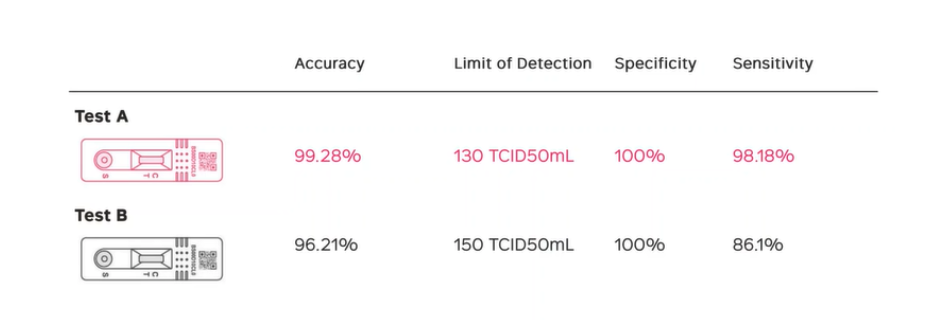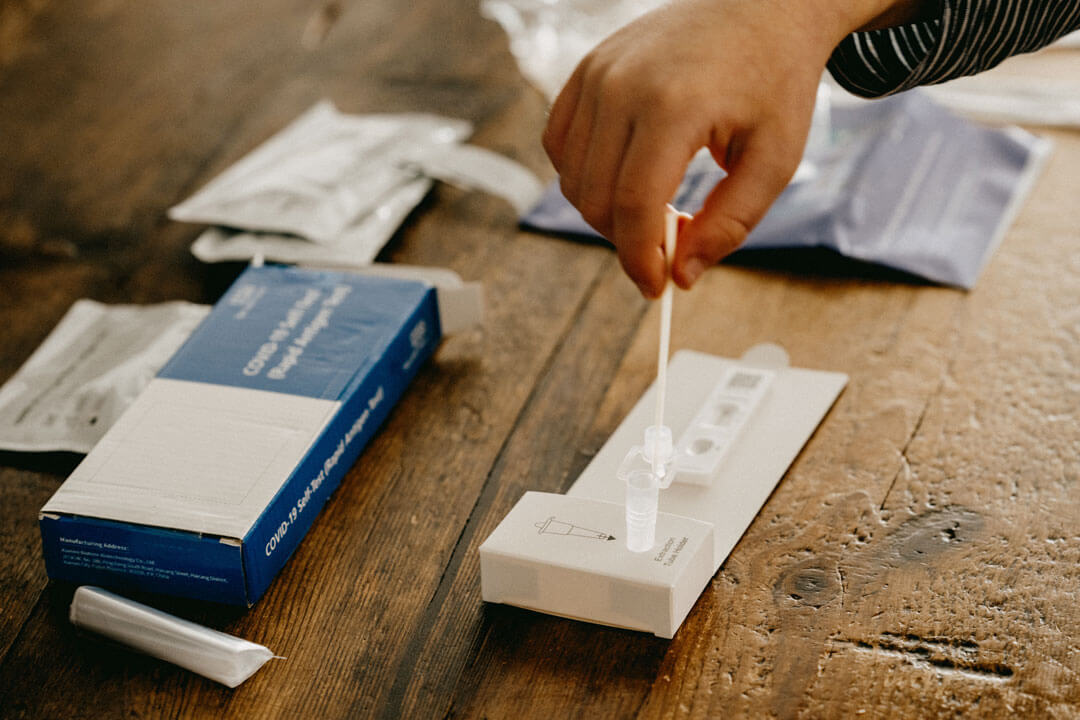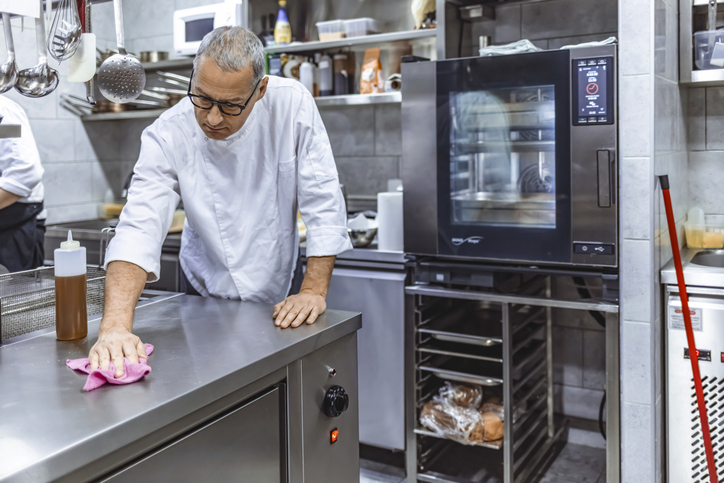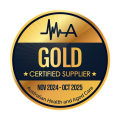How to Compare Rapid Antigen Test Performance
As a leader in the health and hygiene sector, our clients often ask us whether rapid antigen tests are accurate and reliable for use in aged care, education and other large-scale facilities where hygiene and infection control is critical.
Infection prevention and control have always been important, but these aspects of good facility management have become even more so with the onset of COVID-19.
Whilst PCR (polymerase chain reaction) tests are still the gold standard, the technology behind RAT (rapid antigen tests) has been refined and perfected to give accurate results in the acute phase of infection – especially just before symptoms appear and in the first week of symptoms becoming apparent.
The TGA notes that RATs can “detect the presence of specific proteins of the virus. They are most accurate when used to test symptomatic individuals. Although they are not as good at detecting the virus as a nucleic acid test [PCR]. They are not as accurate if you do not have symptoms and can produce false-negative or false-positive results.”
So, if you are using RATs in your facility how do you ensure that your rapid antigen testing protocol is as accurate as possible?
The first step is to understand rapid antigen test quality, how the TGA views and categorises the various tests on the market, and then to choose the RAT that will give you the best result.
Are rapid antigen tests reliable?
RATs are usually performed on a swab sample taken from the throat or nasal secretions and are designed to detect the presence of certain proteins associated with the virus.
To ensure that a RAT is as reliable as possible, we have to first understand several common terms used to describe the efficacy of RATs and how these translate to the reliability of a RAT result.
There are a whole range of different test kits on the market and several common terms that determine the reliability of an individual test. If you’re asking yourself, ‘How reliable are the rapid antigen tests?’, it all comes down to sensitivity, specificity and accuracy.
What is sensitivity?
Sensitivity is the percentage of positive cases that the RAT can detect. This means that if you have a RAT that has 98% sensitivity, it will pick up 98 cases out of every 100 positive cases that you test.
What is specificity?
The specificity rate measures the other potential results, showing the percentage of negative readings the RAT returns correctly.
What is accuracy?
Accuracy, also called ‘overall agreement’, measures the correct percentage of both negative and positive results: it provides a ‘general overview’ number. But like other general overview numbers, it can easily be skewed.
This is because a typical clinical trial will have a much larger number of COVID negatives than COVID positives. So, the negative cases will carry a greater ‘weight’ than the positive cases, and likely skew the overall rating to a higher percentage.
This means it’s possible to have a test with high accuracy, yet still have average sensitivity ratings.
This is one of the reasons why the TGA classifies tests by sensitivity instead of accuracy.
What are the TGA’s sensitivity categories for RATs?
The TGA introduced a three-category rating because not all tests are created equal.
The higher the sensitivity, the less chance that a positive case could be missed, therefore the best category is very high sensitivity, meaning the RAT will correctly identify 95% or more of positive cases.
The second category is high sensitivity covering RATs that pick up 91-95% of positives, and the third is acceptable sensitivity, which covers RATs that will pick up between 81% and 90% of positive cases.
Key takeaway: Choose a RAT with a high sensitivity percentage.
What about the TGAs ‘Limit of Detection’ for RATs?
The limit of detection (LOD) is another important number because it measures the minimum amount of the virus that the test needs to detect a positive case.
In the very early stages of an infection, if the amount of the virus in your sample is less than the limit of detection, then the RAT can miss the case. This means that the lower the limit of detection, the better.
Using a RAT with a low LOD is critical to catching cases before they spread, as there is very little time between having enough of the virus in your system to be detected and actually becoming infectious.
Key takeaway: Look for RATs with a low Limit of Detection (LOD)
Which is the best rapid antigen test on the market?
Whilst there are various brands available, it’s the high accuracy / low LOD tests that are most likely to give a reliable result. But how do you choose between two different tests that both meet these criteria?

Both RATs in this diagram report similar accuracies, LODs and specificity ratings, so you could mistake them as very similar.
However, if you look at the sensitivity rating, you can see that RAT A far outperforms RAT B. Based on the stated percentages, RAT A will miss approximately 2 positive cases out of every 100 cases tested, whilst RAT B will miss approximately 14 positive cases, creating an increased transmission risk.
Summary
While rapid antigen tests are accurate when used correctly, it is the choice of RAT as well as the method of sampling that can substantially increase the accuracy of identifying the virus.
Look for a high sensitivity and low LOD test, or trust the professionals to test your staff and residents. Veridia offers an on-site rapid antigen testing program to ensure that you are delivering the best quality protection to prevent a COVID-19 outbreak at your facility.
Contact our professional team for advice on the right solutions for your facility that ensure compliance and peace of mind.








